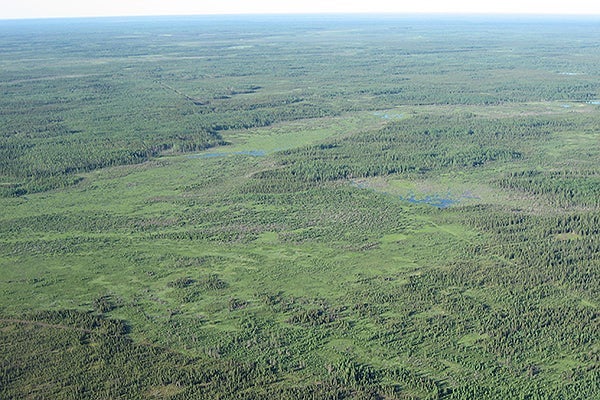

The MacKay River Commercial Oil Sands project (MRCP) is located approximately 27.5km north-west of FortMcMurray in the regional municipality of Wood Buffalo in Alberta, Canada. The project is being developed in phases and is expected to produce around 150,000bpd of bitumen initially.
The MRCP project was initially proposed by MacKay Operating Corporation (Mackay Opco), a joint venture formed by Athabasca Oil (40%) and Cretaceous Oilsands Holdings (60%) to operate the Mackay river oil sand leases. Cretaceous Oilsands Holdings, a wholly owned subsidiary of PetroChina, purchased Athabasca Oil’s 40% stake in the project for $680m in 2012.
The deal was followed by the amalgamation of Cretaceous Oilsands Holdings with Phoenix Energy Holdings, a wholly-owned subsidiary of PetroChina. Phoenix Energy Holdings that now fully owns the $1.3bn MRCP project.
Brion Energy Corporation, previously known as Dover Operating Corporation, is the operator of the MRCP project. Brion Energy is co-owned by Athabasca Oil and Phoenix Energy Holdings.
The project was approved by the Energy Resources Conservation Board and Alberta Environment and Water in December 2011, and is located near to the McKay River and the Athabasca River.
Related project
Carmon Creek Heavy Oil Project, Alberta, Canada
Carmon Creek project is an in-situ heavy oil project located in Northern Sunrise County, around 40km north-east of the Peace River in Alberta, Canada.
Reserves and production
The recoverable bitumen from the project is estimated at 1.7 billion barrels over more than 45 years. The project will use the steam assisted gravity drainage (SAGD) method to produce bitumen from the oil sands of the Mackay region.
MacKay River commercial oil sands project infrastructure
The project will cover around 21,496ha of area in total and will include construction and installation of a central processing facility (CPF), utility corridors and other field facilities. It will also include the construction of pipelines which will carry air, fuel, process water and supply water.
The CPF will be built over an area of approximately 6ha. It will be equipped with supportive facilities for makeup water treatment, steam generation, bitumen treatment, water recycling and vapour recovery and cogeneration.
A captive 85MW power plant will supply electricity required for the operations through a 34.5kV distribution system. Other infrastructure will include well pads, water source and disposal wells, pumps, camps and borrow pits.
Construction details of the MRCP project
The project will be implemented in four phases. Phase 1, expected to come online by 2015, will produce about 35,000bpd of bitumen. Construction on phase 1 was initiated in early 2012.
Phases 2 and 3 will produce additional 40,000bpd of bitumen each and are scheduled to be operational by 2018 and 2020 respectively. The 85MW power plant will be constructed during phase 2. Phase 4 will produce another 35,000bpd of bitumen by 2022. The project is expected to be fully operational by 2023.
Contractors involved with Brion Energy’s oil sands project
A consortium of WorleyParsons and CPECC Canada (a subsidiary of China Petroleum Engineering and Construction Corporation) was awarded an engineering, procurement, fabrication and construction (EPC) contract in September 2013 to provide field facilities for the phase 1 of the MRCP project.
SNC-Lavalin will provide detailed engineering and procurement (EP) services for the CPF under a contract awarded in December 2011.




